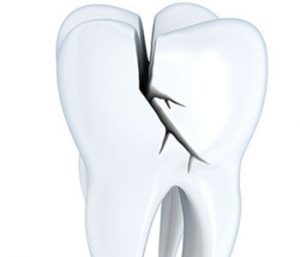There are various reasons why your teeth may have cracks. Cracks may occur on a tooth for various reasons. Depending on the type and size of a crack you may or may not need to seek professional help. Once you have noticed a cracked tooth, there are various factors to consider before you decide to contact us. Among them are whether or not the crack is getting bigger. Other reasons may be an infection within the tooth or pain.
CAUSES OF TOOTH CRACKS
There are various reasons for a cracked tooth. The most common reason is that certain cracks occur without any known preceding factors. The other reason a crack may occur is when there is trauma to the oral cavity or the teeth such as from a fall.
Aging is another cause of cracks in the teeth. Additionally, wide variations in the temperature of food may also cause cracks to occur. Other conditions such as Bruxism, or teeth-clenching or grinding can also lead to cracked and damaged teeth.
It is important to note that there are different types of cracks. The most common are the craze lines which are small, often microscopic cracks that are limited to the enamel. They are often harmless and sometimes occur spontaneously.
The other types of cracks are either vertical or horizontal. Vertical crack lines may be a cause of concern, especially if they extend past the gums. This is because they may cause the spread of bacteria and infection into the gum line. Horizontal cracks are often traumatic and are largely a cosmetic problem.
WHEN DOES A CRACKED TOOTH REQUIRE TREATMENT?
First and foremost, if your cracked tooth starts bleeding, call us immediately. Additionally, if the crack keeps getting wider or deeper, you should definitely book an appointment with our office today. The other reasons you may seek treatment are if the crack is painful, if you get an infection or if you begin to perceive it as a cosmetic problem.

